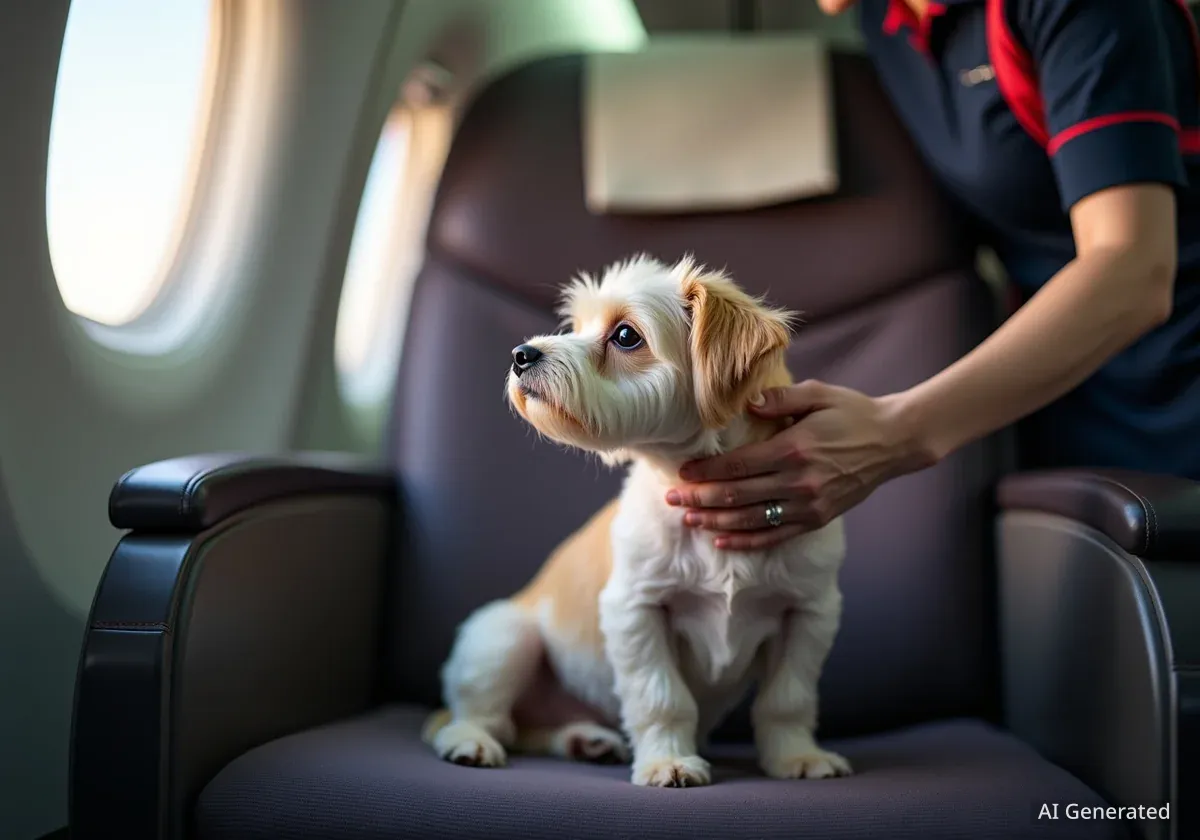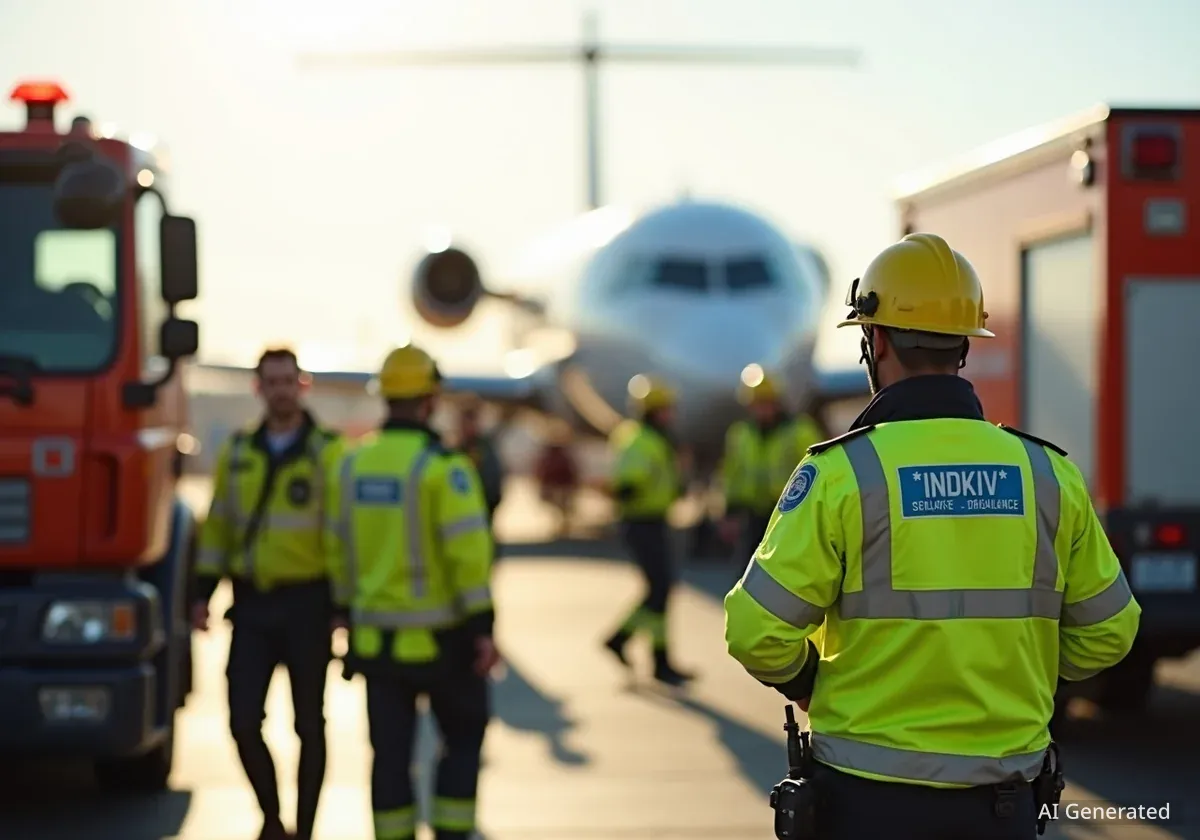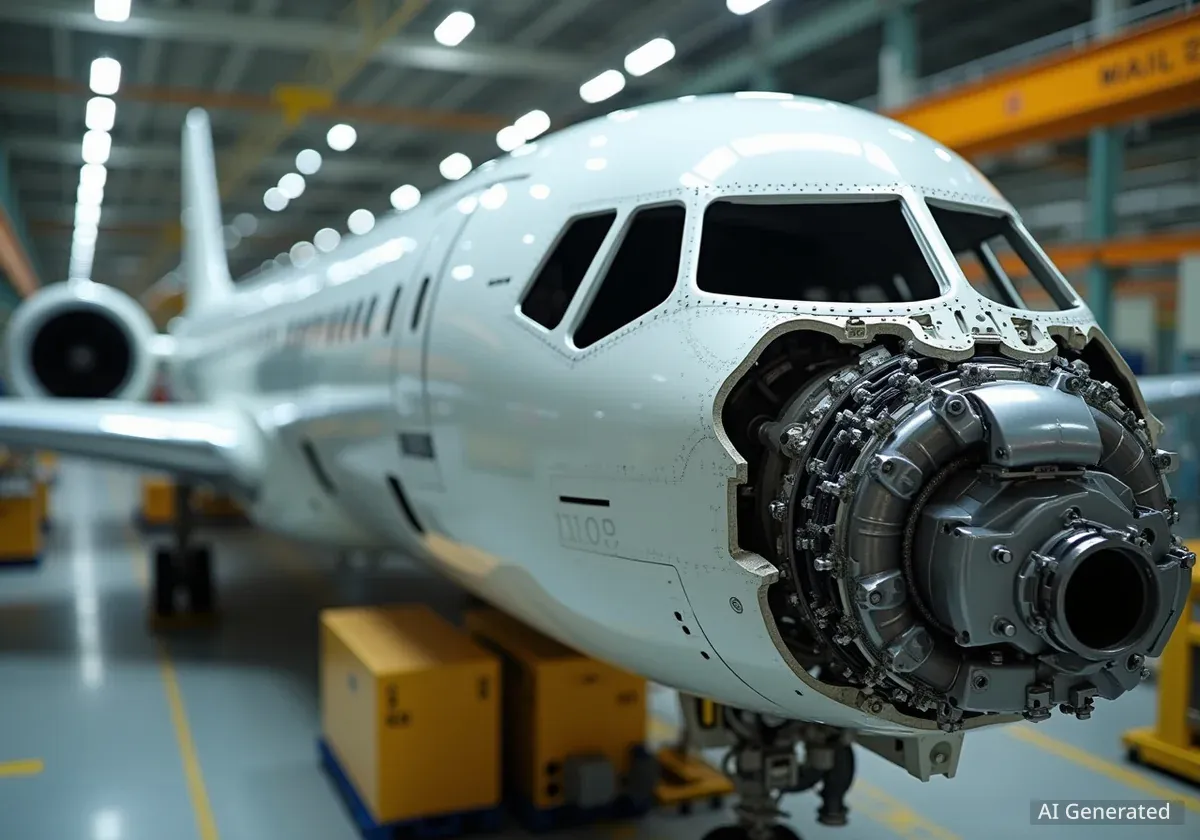A recent incident involving a United Airlines first-class passenger and his 19-year-old dog, Piper, has sparked widespread debate online. The passenger, who is a self-proclaimed "dog content creator," shared videos of his travels with the senior dog, raising questions about airline pet policies and passenger conduct.
The videos, which have gained millions of views across social media platforms, show the passenger with his dog in the cabin, at times outside of its carrier. This has led to strong reactions from both dog lovers and those who emphasize adherence to airline regulations.
Key Takeaways
- A passenger flew United first class with his 19-year-old dog, Piper, who is blind and deaf.
- Videos show the dog outside of its carrier during parts of the flight, leading to a flight attendant's reminder.
- The passenger later showed a "dog travel hack" on a supposed second flight, using a chest carrier.
- The incident has created significant discussion online regarding airline pet policies and passenger responsibility.
Details of the Flight Incident
The viral video begins with the passenger seated in United first class with Piper on his lap. Piper, a 19-year-old dog, is noted to be both blind and deaf. The passenger is seen interacting with Piper, including feeding him a goldfish snack.
A flight attendant approaches to take drink orders. The passenger requests a Diet Coke for himself and water for his dog. After taking the order, the flight attendant issues a polite reminder regarding airline policy.
"Your pet needs to be in its carrier at all times," the flight attendant stated.
The passenger then asked for clarification, "the whole time?" to which the flight attendant confirmed, "the whole time." The passenger then mentioned that Piper "doesn't like being in the carrier," adding, "this is going to get ugly."
Airline Pet Policy
Most airlines require pets traveling in the cabin to remain inside their carriers under the seat for the entire duration of the flight. This rule applies to pets, not certified service animals.
The "Dog Travel Hack"
The video transitions to what the content creator claims is a second flight. In this segment, the passenger presents what he calls a "dog travel hack." Piper is shown in what appears to be a baby-like carrier, strapped to the passenger's chest.
To further conceal Piper, the dog is seen wearing a hat over his head. It is unclear if this was genuinely a separate flight or if the content was filmed during different stages of the same journey for social media purposes.
The passenger's actions have generated a significant online response. Many viewers found the situation endearing, especially given Piper's age and health conditions. Others criticized the passenger for openly disregarding airline rules and flight attendant instructions.
Distinction: Pets vs. Service Animals
A key point in this discussion is the difference between an in-cabin pet and a service animal. Service animals are trained to perform tasks for individuals with disabilities and are generally allowed to sit with their owners outside of a carrier. Emotional support animals, while previously having some exceptions, are now largely treated as regular pets by airlines.
Public Reaction and Airline Rules
The internet's reaction to the video has been notably divided. A large segment of dog owners and animal lovers expressed support for the passenger, viewing his actions as an act of kindness towards his senior, blind, and deaf dog.
They argue that Piper did not appear to be bothering anyone and that the rules could be more flexible in such circumstances. Many people feel a strong bond with their pets and wish for more humane travel options.
Conversely, many other commentators strongly emphasized the importance of following airline regulations. They pointed out that flight attendants are responsible for enforcing these rules, which are in place for the safety and comfort of all passengers, including those with allergies or fears of animals.
- Policy Enforcement: Flight attendants are tasked with ensuring all passengers adhere to safety and operational rules.
- Passenger Safety: Rules regarding pets in carriers are designed to prevent potential issues such as bites, allergic reactions, or interference during emergencies.
- Fairness to Others: Some passengers pay extra for pet-free travel zones or have medical conditions that necessitate strict adherence to pet policies.
The Broader Discussion on Pet Travel
This incident also highlights a larger conversation about pet travel policies. Many dog owners advocate for more humane and flexible options for traveling with pets, especially for larger dogs that cannot fit under a seat and must travel in cargo holds. The cargo hold option is often seen as stressful and potentially dangerous for animals.
Some online comments suggested that if the passenger had claimed Piper as a service animal, he might have been able to keep the dog on his lap without a carrier and avoid pet fees. However, falsely claiming a pet as a service animal is illegal and can carry significant penalties.
The debate underscores the tension between individual pet owner desires and the standardized regulations designed for the complex environment of commercial air travel. As dog ownership continues to rise, there is an ongoing call for airlines to innovate and develop solutions that balance pet welfare with passenger safety and comfort.
The event serves as a reminder that while heartwarming moments with pets are appealing, airline policies are in place to manage a wide range of factors, from safety protocols to passenger comfort. The incident has certainly added to the ongoing discussion about how pets fit into modern air travel.





